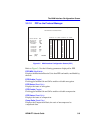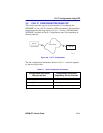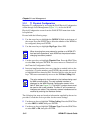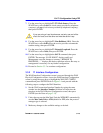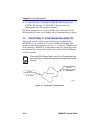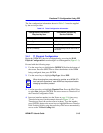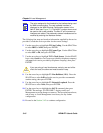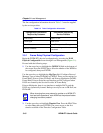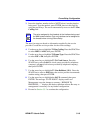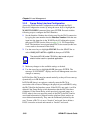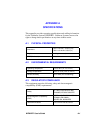
Chapter 3: Local Management
3-16 WPIM-RT1 User’s Guide
The following four steps are based on information supplied by the service
provider. Consult the service provider for the correct settings.
5. Use the arrow keys to highlight T1 Line Coding. Use the SPACE bar
to select B8ZS or AMI, then press ENTER.
6. Use the arrow keys to highlight T1 Frame Type. Use the SPACE bar
to select ESF or D4, then press ENTER.
7. Use the arrow keys to highlight T1 Tx Clock Source. Use the SPACE
bar to select Local (no clock source provided by telephone company)
or Loop (clock source provided by telephone company), then press
ENTER.
8. Use the arrow keys to highlight T1 Line Buildout (LBO). Press the
SPACE bar to select 0 dB unless the service provider recommends
another setting, then press ENTER.
9. Use the arrow keys to highlight T1 Network Loopback. Press the
SPACE bar to select None, then press ENTER.
10. Use the arrow keys to highlight the SAVE command, then press
ENTER. The message “SAVE DONE!” displays and Local
Management saves the changes to memory. The host platform reboots,
and re-entry to Local Management is necessary for any further
configuration.
11. Proceed to the Section 3.4.2 to continue configuration.
NOTE
The value assigned to the timeslots is the interface being used
for WAN communication. The next available interface is
displayed on the WAN Physical Configuration screen in the
Next IF field (see Figure 3-1). The Next IF number shown must
be used to add a new interface. The Next IF will increment as
interfaces are added. The previously entered interfaces can be
modified by entering the interface number.
!
CAUTION
If you are using a Local clock source, set only one end of the
circuit for Local, the other end must be set for Loop.




